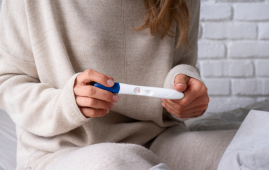

According to recent research from RCSI University of Medicine and Health Sciences, information available at birth may assist identify children who are prone to ADHD risk.
The study, published in Development and Psychopathology, looked at data from over 10,000 children in the United States and discovered that information about pregnancy and birth can help predict the severity of ADHD symptoms in children.
The Adolescent Brain Cognitive Development (ABCD) project is an ongoing study of children born between 2005 and 2009 in the United States. Children were recruited in the study between the ages of 9 and 10, and their parents were questioned about the pregnancy and birth, as well as their child’s present mental health.
The RCSI researchers selected 40 characteristics that would normally be known at birth, such as the baby’s gender, the age of the parents, any difficulties during pregnancy or delivery, and the baby’s exposure to hazards such as cigarette smoke in the womb. The researchers discovered that 17 of the 40 characteristics were very good in predicting the number of ADHD symptoms in children using machine learning and statistical methodologies.
Dr. Niamh Dooley of the RCSI Department of Psychiatry, the co-lead researcher, noted that few studies have looked at how prenatal and birth information could be relevant in predicting ADHD:
“We know that certain events during our time in the womb can have long-lasting consequences for our health. But not many studies have tried to quantify just how useful prenatal information could be to predicting childhood ADHD symptoms. We focused on readily available information about pregnancies and births, the kind that would be in antenatal records. This ensures our results can be compared to other studies using medical records and that they are relevant to public health.”
“The other key element of this study was acknowledging the contribution of social, economic, and demographic factors to maternal and child health. For instance, prenatal information did not predict ADHD symptoms equally across the sexes, family income brackets, or racial/ethnic groups,” Dr. Dooley said.
Professor Mary Cannon, Professor of Psychiatric Epidemiology and Youth Mental Health at RCSI and study co-lead commented, “While we only explained up to 10% of the variation in childhood ADHD symptoms, this was with information typically available at birth. We cannot predict who will develop ADHD in childhood with birth information alone, but it may help identify which children are most in need of support, particularly when combined with other factors like genetics or family history and the early life environment.”
“In our study, mothers were asked about the pregnancy and birth of their child, 9–10 years earlier. The next step would be to carry out a study in a group that has been followed in real-time through pregnancy, birth, and childhood. This would boost our confidence in this prenatal information, and confidence that it can help identify children at risk of developing ADHD, at a very early stage of life.”
The study found that being male, as well as exposure to factors while in the womb such as cigarette smoke, recreational drugs, and the mother having urinary tract infections or low iron levels, were effective in predicting ADHD symptoms in childhood.
more recommended stories
 Osteoarthritis Cause: Vitamin E Levels Not Linked
Osteoarthritis Cause: Vitamin E Levels Not LinkedA recent study published in Scientific.
 Comparing Cancer Risk: Medically Assisted vs. Natural Conception
Comparing Cancer Risk: Medically Assisted vs. Natural ConceptionIn a recent JAMA Network Open.
 Brain Chemistry & Political Attitudes: Neural Switch Theory
Brain Chemistry & Political Attitudes: Neural Switch TheoryIn summary, a recent study uses.
 Immunosuppression Driver Found in Glioblastoma
Immunosuppression Driver Found in GlioblastomaFilippo Veglia, Ph.D., an assistant professor.
 Early Brain Development: Gene Control Atlas Unveiled
Early Brain Development: Gene Control Atlas UnveiledAn atlas of the brain’s early.
 PLS Riskier in ABO Mismatched Lung Transplants
PLS Riskier in ABO Mismatched Lung TransplantsPassenger lymphocyte syndrome (PLS) is a.
 Lysosomal Function in Parkinson’s Disease Risk
Lysosomal Function in Parkinson’s Disease RiskThe genetic traits that affect the.
 Omega-6 Fatty Acid Role in Bipolar Disorder
Omega-6 Fatty Acid Role in Bipolar DisorderHigher concentrations of arachidonic acid, an.
 Transplant Drug Shows Promise in Slowing Alzheimer’s in Seizure Patients
Transplant Drug Shows Promise in Slowing Alzheimer’s in Seizure PatientsProtein imbalances, which heighten the excitability.
 Fentanyl Inhalation: Brain Damage Risks
Fentanyl Inhalation: Brain Damage RisksAfter treating a middle-aged man who.

Leave a Comment